Building Stronger Connections: 26 Networking Follow-up Letter Templates to Expand Your Professional Network
Welcome to our comprehensive guide on Networking Follow-up Letters! In today’s interconnected professional world, effective networking is a key driver of success. However, the true value of networking lies not only in making initial connections but also in the follow-up. Networking follow-up letters are a powerful tool that can help you build and nurture relationships, solidify connections, and unlock a world of opportunities. Whether you’re seeking to express gratitude, request further collaboration, or stay top of mind, our guide will provide you with valuable insights, tips, and templates to craft impactful follow-up letters. Discover the art of maintaining professional relationships and learn how networking follow-up letters can propel your career to new heights. Let’s dive in!
The Importance of Networking Follow-up Letters
Here are a few reasons why networking follow-up letters matter:
- Building rapport: Following up after a networking event or interaction shows that you value the connection made and are invested in building a professional relationship. It allows you to leave a lasting impression and keep the conversation going.
- Solidifying connections: Networking follow-up letters provide an opportunity to reinforce the connection you made with someone. By expressing gratitude, mentioning specific details, and offering assistance, you can strengthen the bond and increase the likelihood of future collaboration or support.
- Demonstrating professionalism: Sending a well-crafted follow-up letter demonstrates your professionalism and attention to detail. It shows that you take networking seriously and are proactive in maintaining relationships, which can leave a positive impression on others.
- Staying top of mind: Following up with a personalized letter helps you stay on the radar of your contacts. It reminds them of your interaction, keeps your name fresh in their memory, and increases the chances of being considered for future opportunities.
- Expanding your network: Networking follow-up letters can lead to expanding your professional network. By maintaining regular communication, you open the door to potential introductions, referrals, or collaborations with the person you’ve connected with.
- Enhancing your reputation: Consistently sending thoughtful and well-crafted follow-up letters can contribute to a positive professional reputation. It shows that you are proactive, reliable, and respectful of others’ time and effort, which can enhance your credibility in the industry.
#1: Thank you for the networking opportunity:
Express gratitude to the person for providing you with the chance to connect and network. The purpose of this letter is to express my heartfelt gratitude for the networking opportunity you provided. It serves as a sincere acknowledgment of the value I place on our connection and the meaningful conversations we had. This letter aims to convey my appreciation for the chance to network and emphasizes the significance of the opportunity in building professional relationships.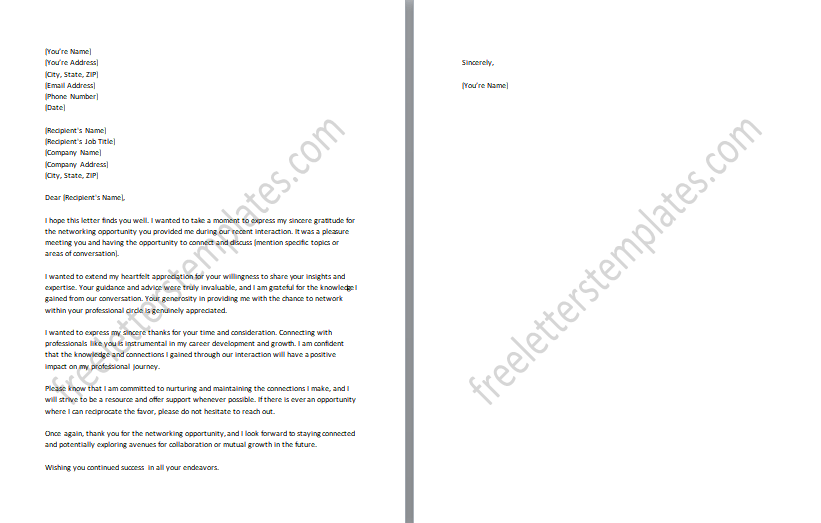
#2: Request for a follow-up meeting:
Ask to schedule another meeting to continue the conversation or discuss specific topics in more detail. The purpose of this letter is to formally request a follow-up meeting to continue our conversation and explore specific topics in more depth. It serves as an opportunity to express my genuine interest in further discussions and acknowledges the value of your expertise and insights. This letter aims to highlight the importance of continuing our interaction and emphasizes the desire to collaborate and exchange ideas in a more focused and detailed manner.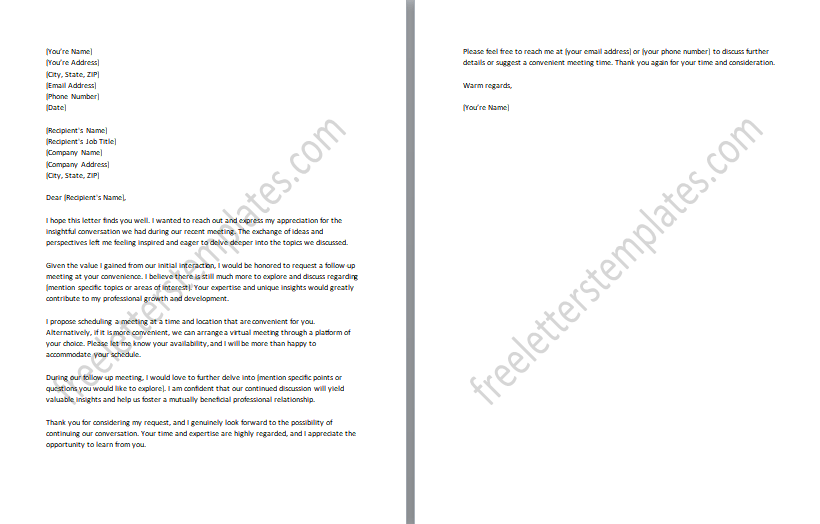
#3: Expressing gratitude for a referral:
Thank the individual for referring you to someone or recommending your services, and express appreciation for their support. The purpose of this letter is to convey my heartfelt appreciation for the referral you provided and the recommendation you made on my behalf. It serves as an opportunity to express my sincere gratitude for your support and acknowledge the significant impact it has had on my professional journey. This letter aims to explain the significance of your referral or recommendation, emphasizing the trust and confidence it instills in potential clients or opportunities. By expressing my gratitude in writing, I hope to convey the depth of my appreciation for your kind act and the positive impact it has made on my career.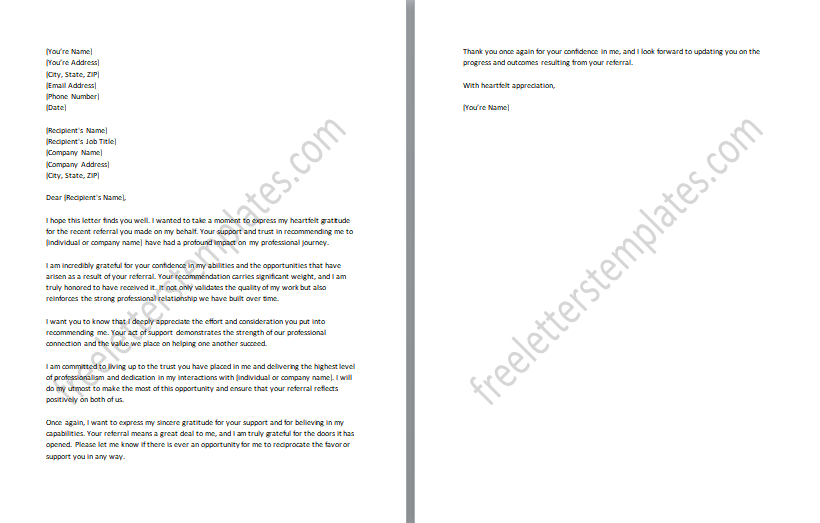
#4: Follow-up on a job application or interview:
Send a letter to check on the status of your application or to express gratitude for the interview opportunity. The purpose of this letter is to provide a summary paragraph for a follow-up letter regarding a job application or interview. It serves as a polite inquiry to check on the status of the application or express gratitude for the interview opportunity. This letter aims to emphasize continued interest in the position and expresses appreciation for the consideration and time invested in the hiring process.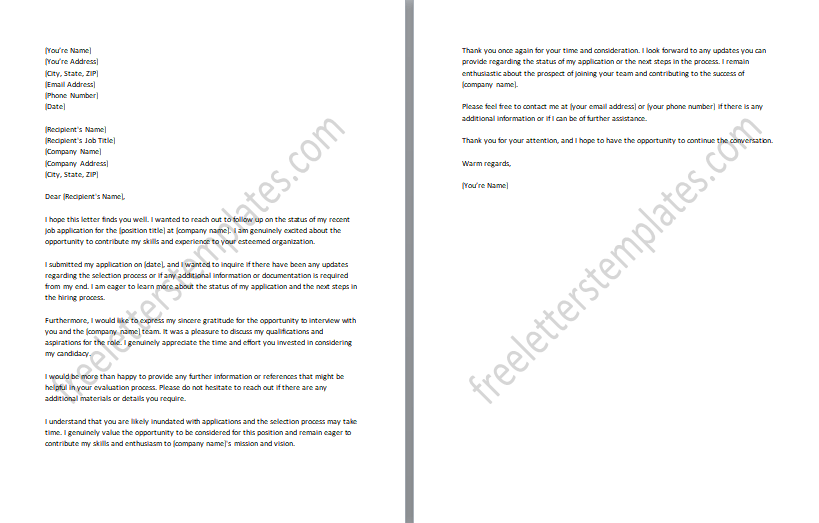
#5: Sending updated information or documents:
Provide updated information or share additional documents that are relevant to a previous conversation or meeting. The purpose of this letter is to provide a summary paragraph for a follow-up letter where updated information or additional documents are shared. It serves as a means to provide relevant and updated information discussed in a previous conversation or meeting. This letter aims to ensure that the recipient has the most current and accurate information necessary for further actions or decisions. By sharing updated information or additional documents, it demonstrates a proactive approach and a commitment to maintaining open and transparent communication.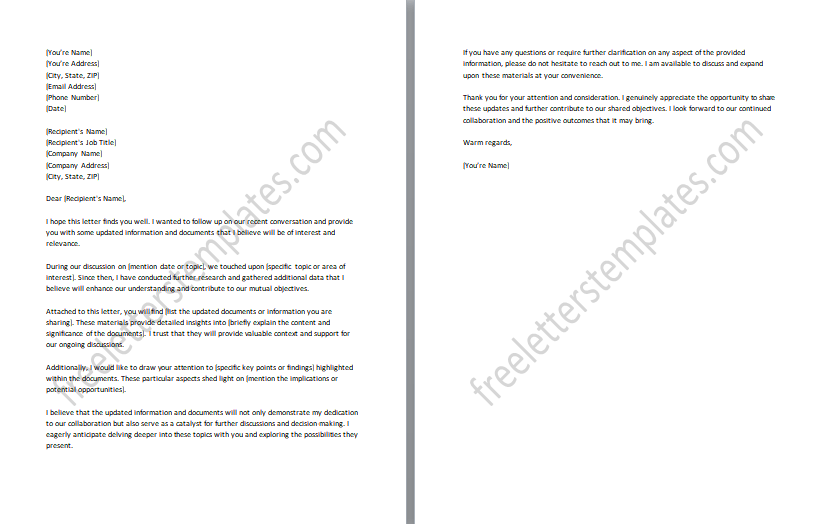
#6: Requesting additional information or resources:
Ask for more information or resources that were discussed during your networking interaction. The purpose of this letter is to provide a summary paragraph for a follow-up letter requesting additional information or resources. It serves as a polite inquiry to ask for more details or materials that were discussed during a networking interaction. This letter aims to express the importance of the requested information or resources in furthering professional growth or addressing specific needs.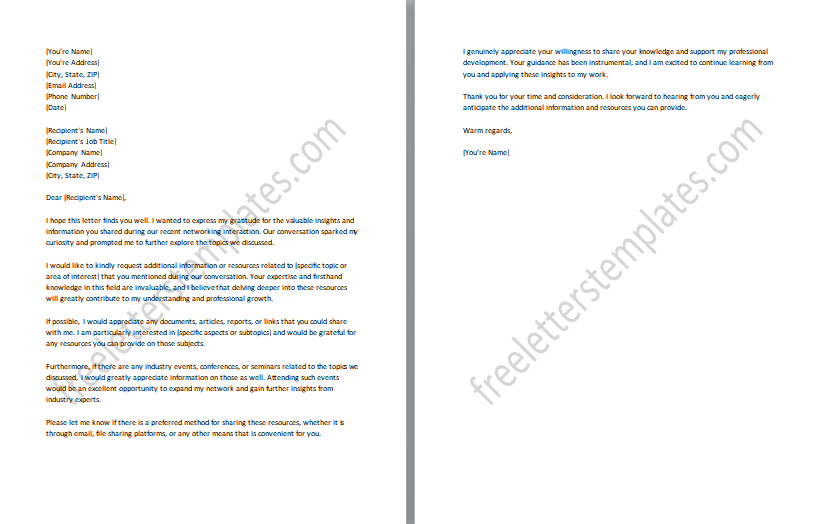
#7: Sharing industry news or insights:
Share relevant industry news, trends, or insights that might be of interest to the person you are connected with. The purpose of this letter is to provide a summary paragraph for a follow-up letter sharing industry news or insights. It serves as a means to share relevant and interesting news, trends, or insights with the recipient, demonstrating a commitment to keeping them informed about the industry. This letter aims to provide valuable information that can contribute to their knowledge and professional growth. Sharing industry news or insights shows an effort to maintain a meaningful and beneficial connection.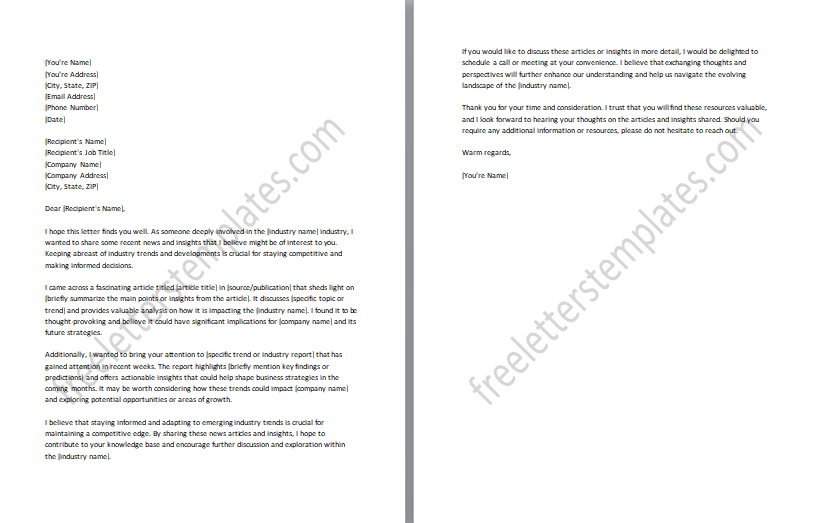
#8: Offering assistance or support:
Extend a helping hand by offering your assistance or support in a particular area of expertise. The purpose of this letter is to provide a summary paragraph for a follow-up letter offering assistance or support. It serves as an opportunity to extend a helping hand and offer expertise in a specific area. This letter aims to express a genuine willingness to assist the recipient, highlighting the value and benefits of the support offered. Offering assistance or support demonstrates a commitment to building a mutually beneficial relationship and fostering collaboration.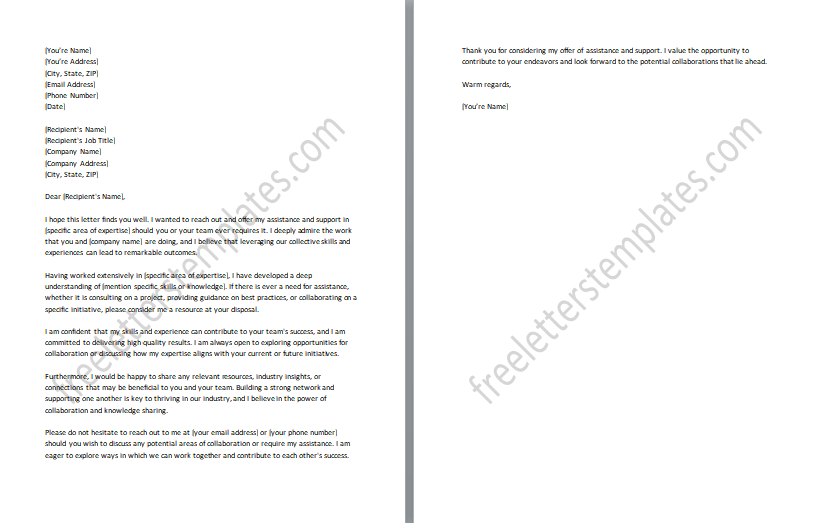
#9: Requesting a recommendation or testimonial:
Ask the person to provide a recommendation or testimonial that you can use for professional purposes. The purpose of this letter is to provide a summary paragraph for a follow-up letter requesting a recommendation or testimonial. It serves as a polite request to ask the person to provide a recommendation or testimonial that can be used for professional purposes. This letter aims to convey the importance of their opinion and expertise in building credibility and enhancing professional opportunities.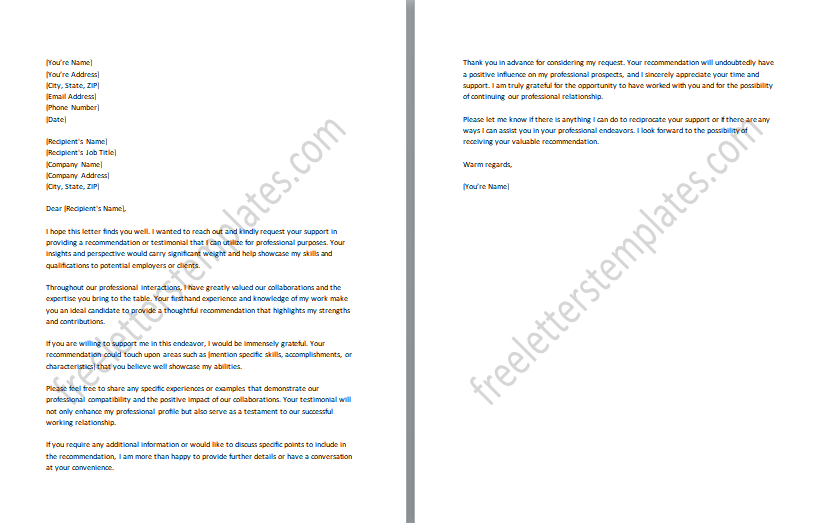
#10: Extending an invitation to an event or conference:
Invite the person to attend an upcoming event or conference that you think might be valuable for them. The purpose of this letter is to provide a summary paragraph for a follow-up letter extending an invitation to an event or conference. It serves as a formal invitation to attend an upcoming event or conference that is deemed beneficial and relevant to the recipient. This letter aims to highlight the value and potential opportunities associated with the event, emphasizing the benefits they would gain from participating. Extending the invitation demonstrates a desire to foster networking opportunities and share knowledge in a collaborative environment.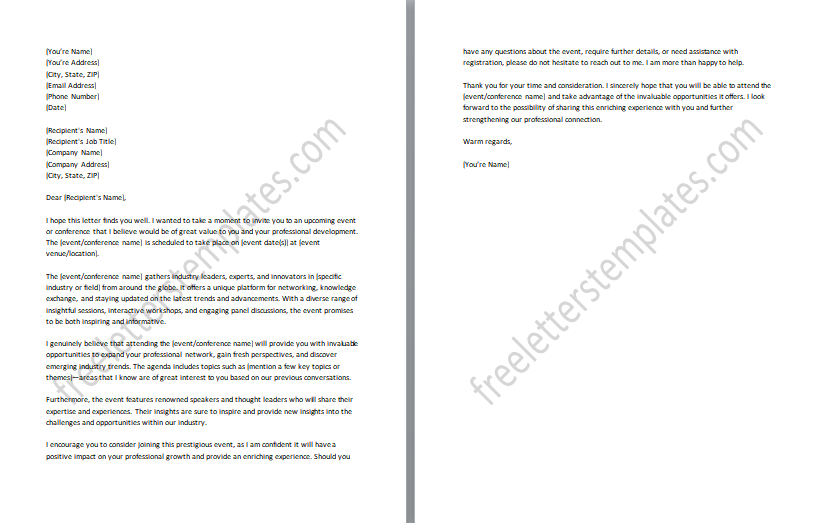
#11: Following up after attending an event or conference:
Send a letter to express gratitude for the opportunity to attend and discuss key takeaways or follow-up actions. The purpose of this letter is to provide a summary paragraph for a follow-up letter after attending an event or conference. It serves as a means to express gratitude for the opportunity to attend and engage in valuable discussions. This letter aims to highlight key takeaways from the event or conference and discuss any follow-up actions that may have been identified. Following up, it demonstrates appreciation for the knowledge and connections gained during the event, as well as a commitment to leveraging those experiences for further professional growth and collaboration.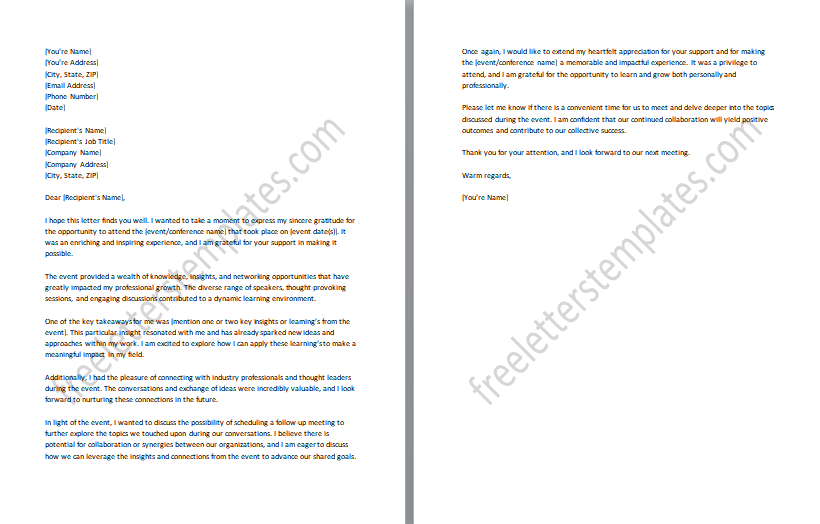
#12: Requesting an informational interview:
Ask for an informational interview to gather more information about a specific industry, company, or role. The purpose of this letter is to provide a summary paragraph for a follow-up letter requesting an informational interview. It serves as a polite request to gather more information about a specific industry, company, or role through a one-on-one conversation. This letter aims to express a genuine interest in learning from the recipient’s experiences and expertise. By requesting an informational interview, it demonstrates a proactive approach to acquiring valuable insights and building professional connections.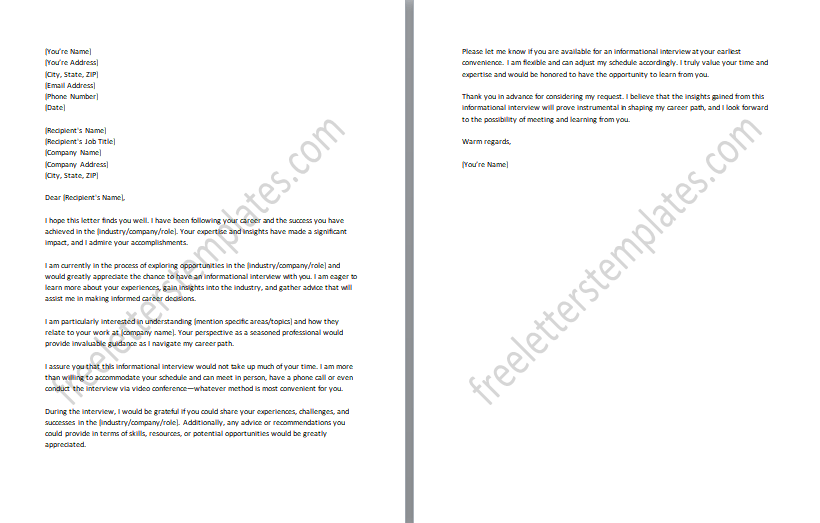
#13: Following up on a previous conversation or meeting:
Recap the previous discussion or meeting and discuss any next steps or actions. The purpose of this letter is to provide a summary paragraph for a follow-up letter following a previous conversation or meeting. It serves as a means to recap the key points and highlights from the previous discussion or meeting. This letter aims to discuss any agreed-upon next steps or actions, emphasizing the importance of maintaining progress and momentum. Following up demonstrates a commitment to effective communication and ensures that everyone is on the same page moving forward.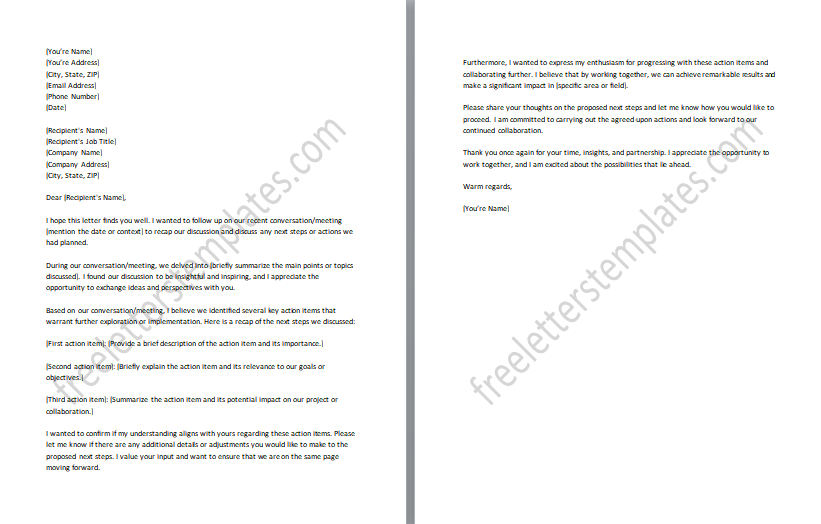
#14: Expressing interest in a potential collaboration or partnership:
Express your interest in collaborating or forming a partnership with the person or their organization. The purpose of this letter is to provide a summary paragraph for a follow-up letter expressing interest in a potential collaboration or partnership. It serves as a means to communicate your enthusiasm and desire to work together with the recipient or their organization. This letter aims to highlight the alignment of goals and values, emphasizing the mutual benefits and synergies that can be achieved through collaboration.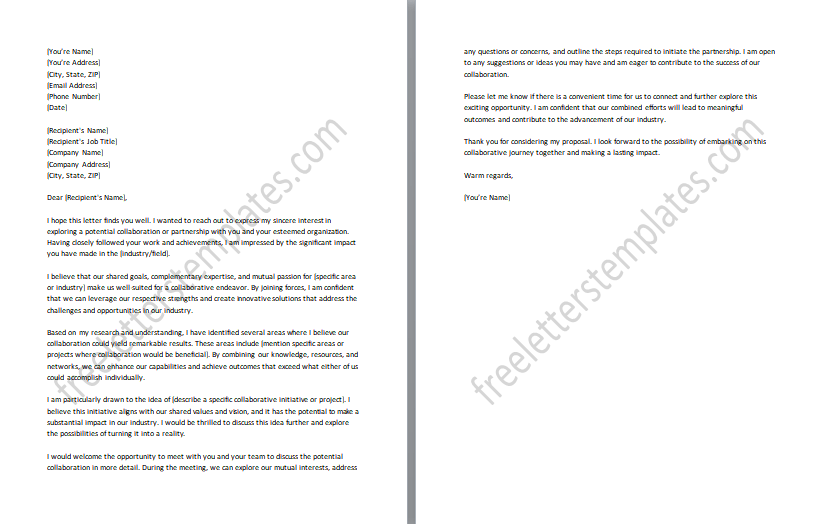
#15: Thanking a contact for their time and advice:
Send a letter to thank the individual for taking the time to provide guidance, advice, or mentorship. The purpose of this letter is to provide a summary paragraph for a follow-up letter thanking a contact for their time and advice. It serves as an expression of gratitude for the individual’s generosity in providing guidance, advice, or mentorship. This letter aims to acknowledge the value and impact of their support on your personal and professional development. By expressing thanks, it demonstrates appreciation for their time, expertise, and willingness to help.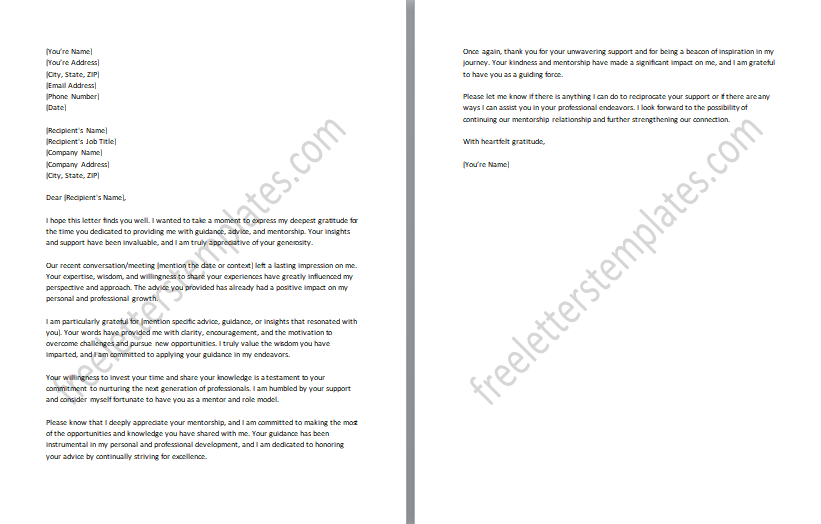
#16: Sharing a success story or milestone:
Share a recent success story or professional milestone to keep the person updated on your progress. The purpose of this letter is to provide a summary paragraph for a follow-up letter sharing a success story or professional milestone. It serves as a means to update the recipient on recent achievements and milestones in your professional journey. This letter aims to share positive news and demonstrate progress, showcasing the value of their support and involvement in your growth.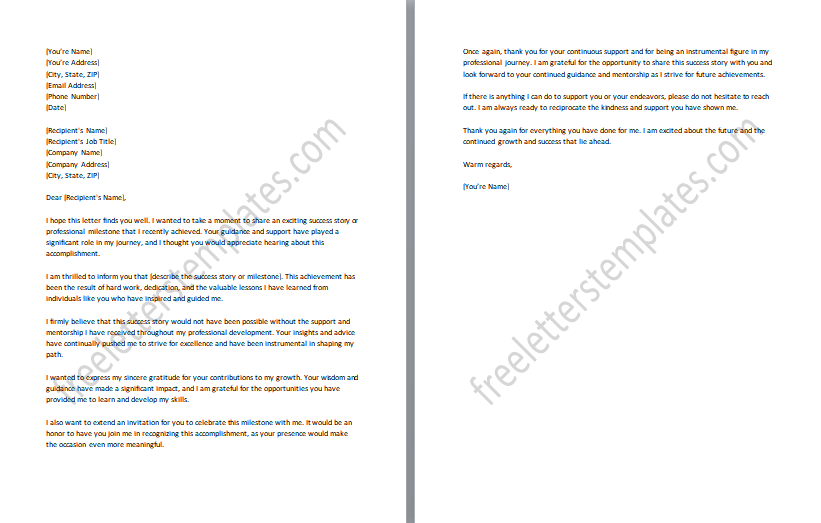
#17: Offering congratulations on a professional achievement:
Congratulate the person on their recent professional achievement or milestone. The purpose of this letter is to provide a summary paragraph for a follow-up letter offering congratulations on professional achievement. It serves as a means to extend heartfelt congratulations to the recipient for their recent accomplishment or milestone. This letter aims to acknowledge their hard work, dedication, and success, highlighting the significance of their achievement.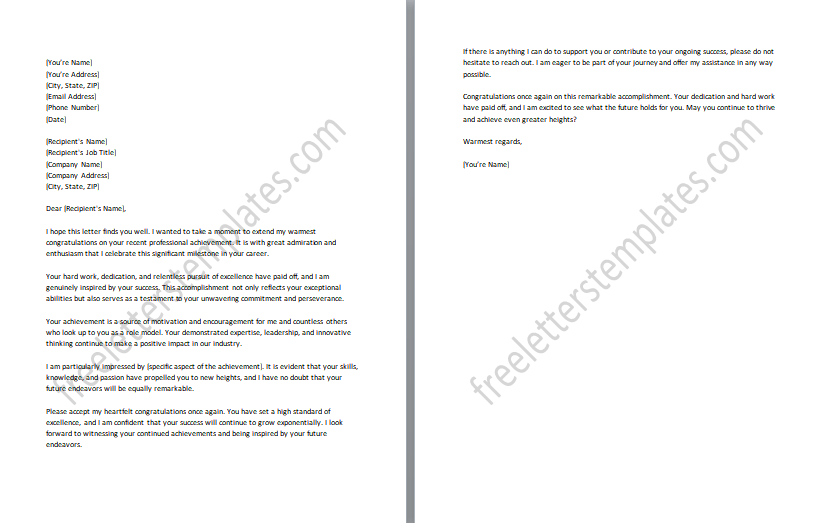
#18: Suggesting a potential collaboration or project idea:
Present a collaborative project idea or propose a joint venture that aligns with both parties’ interests. The purpose of this letter is to provide a summary paragraph for a follow-up letter suggesting a potential collaboration or project idea. It serves as a means to present a collaborative project idea or propose a joint venture that aligns with the interests of both parties. This letter aims to highlight the potential synergies and benefits that can be achieved through working together.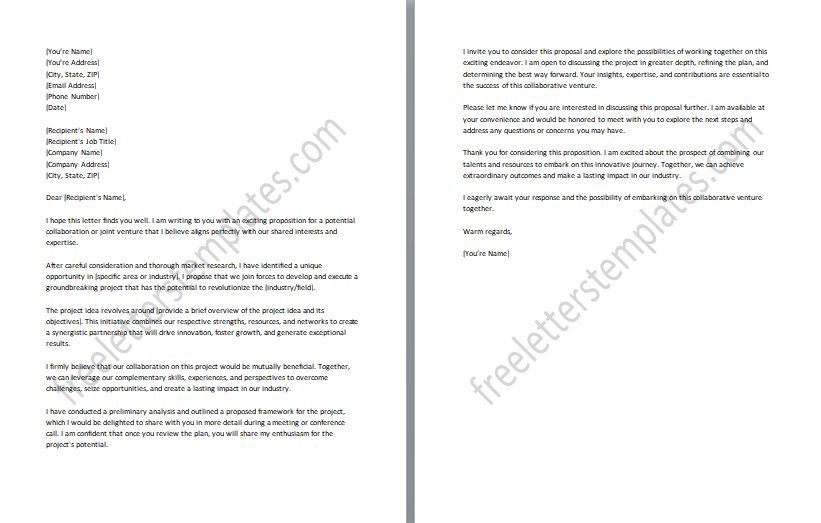
#19: Inviting a contact to join your professional network on social media:
Extend an invitation to connect on professional networking platforms like LinkedIn. The purpose of this letter is to provide a summary paragraph for a follow-up letter inviting a contact to join your professional network on social media. It serves as an invitation to connect and expand your professional network, particularly on platforms like LinkedIn. This letter aims to highlight the benefits of connecting on social media, such as staying updated on each other’s professional endeavors, sharing industry insights, and fostering potential collaborations.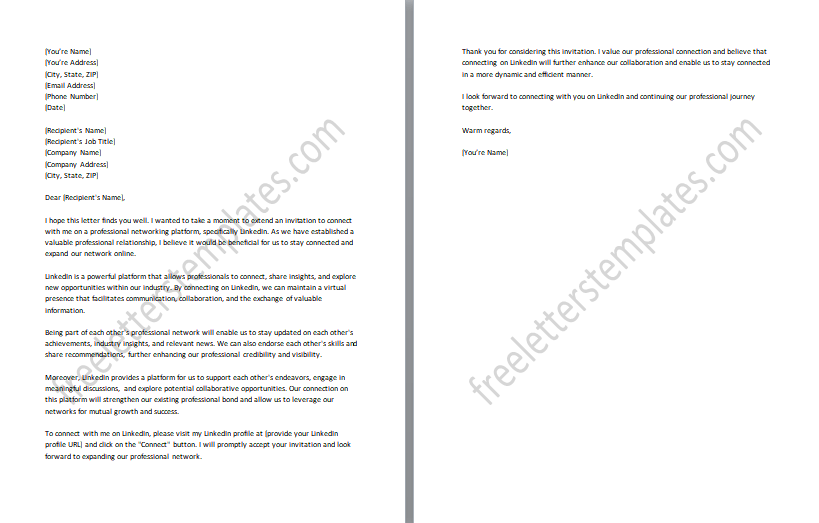
#20: Requesting feedback on a project or proposal:
Ask for feedback on a specific project or proposal you shared during your networking interaction. The purpose of this letter is to provide a summary paragraph for a follow-up letter requesting feedback on a project or proposal. It serves as a polite request to gather valuable insights and input regarding a specific project or proposal that was previously shared during a networking interaction. This letter aims to emphasize the importance of the recipient’s expertise and perspective in shaping the project or proposal. By requesting feedback, it demonstrates a willingness to improve and refine the work based on their valuable feedback, ultimately aiming for a more successful outcome.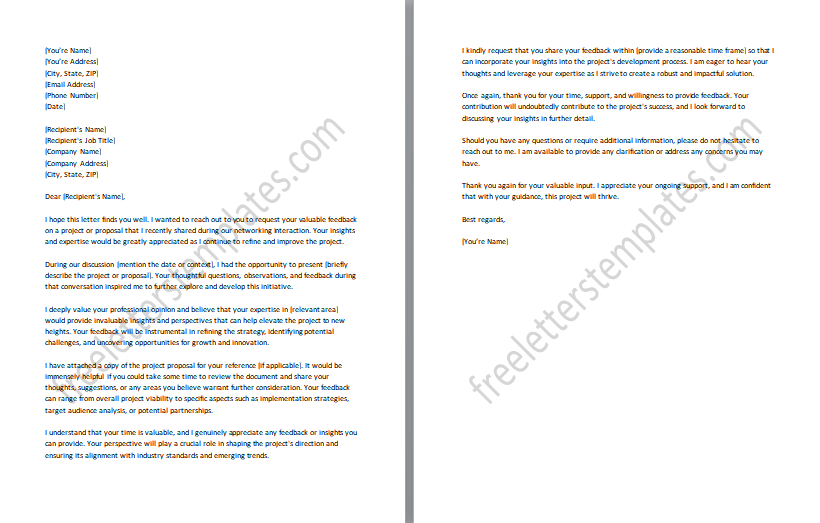
#21: Following up on a request for assistance or advice:
Follow up on a previous request for assistance or advice and provide an update or seek further guidance. The purpose of this letter is to provide a summary paragraph for a follow-up letter following a previous request for assistance or advice. It serves as a means to follow up on the request made earlier, providing an update on the progress or outcome of the situation. This letter aims to express gratitude for the previous assistance or advice received and seeks further guidance or input if necessary.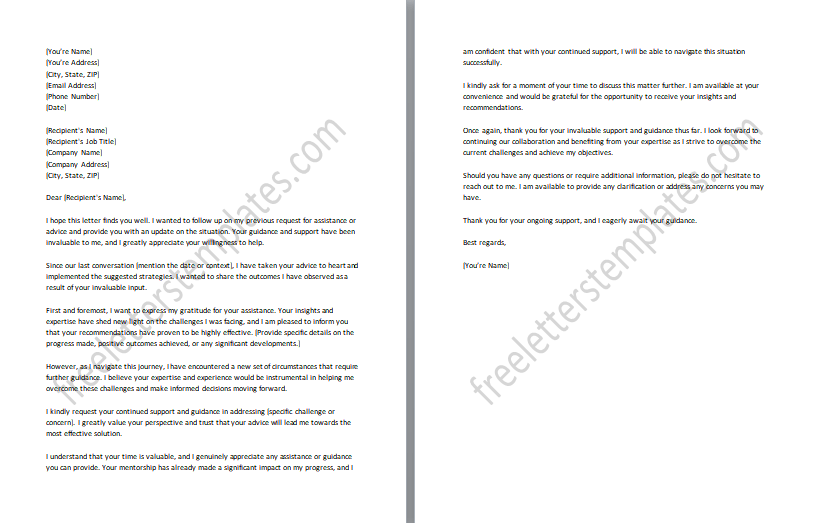
#22: Requesting a referral to another contact or company:
Ask for a referral to someone else who might be able to provide additional insights or opportunities. The purpose of this letter is to provide a summary paragraph for a follow-up letter requesting a referral to another contact or company. It serves as a polite request to tap into the recipient’s network for additional insights, guidance, or potential collaborations. This letter aims to express appreciation for the recipient’s expertise and judgment while emphasizing the value of their referral in connecting with valuable resources and contacts. By requesting a referral, it demonstrates a proactive approach to expanding professional connections and exploring new opportunities within the industry or field of interest.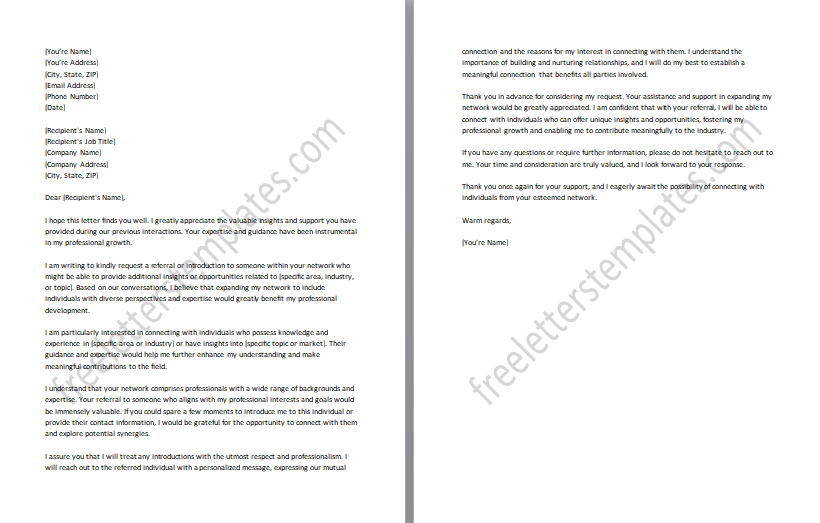
#23: Sharing a relevant article, blog post, or resource:
Share a useful article, blog post, or resource that you think might benefit the person based on your previous conversation. The purpose of this letter is to provide a summary paragraph for a follow-up letter sharing a relevant article, blog post, or resource. It serves as a means to share valuable information or insights that align with the recipient’s interests or previous conversation. This letter aims to demonstrate thoughtfulness and provide value by sharing a specific article, blog post, or resource that you believe will benefit the recipient. By sharing the resource, it shows a continued interest in supporting their professional growth and fostering a mutually beneficial relationship.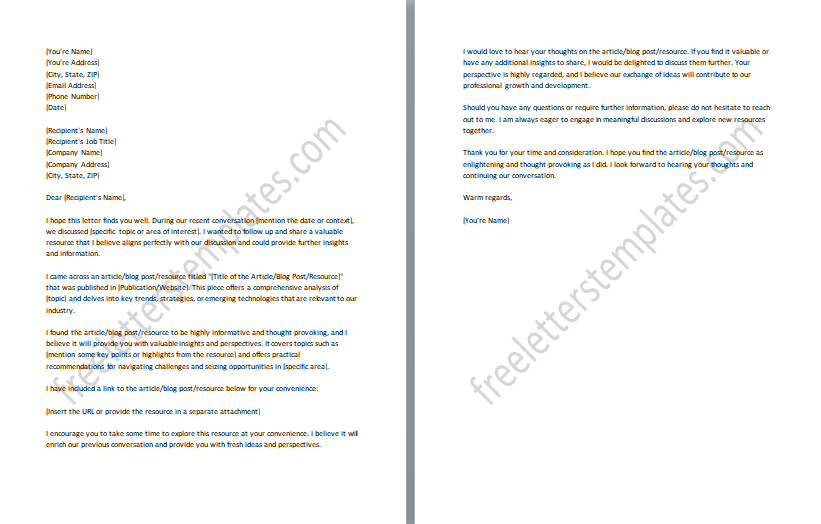
#24: Requesting to be added to a mailing list or newsletter:
Ask to be added to their mailing list or newsletter to stay updated on industry news and events. The purpose of this letter is to provide a summary paragraph for a follow-up letter requesting to be added to a mailing list or newsletter. It serves as a polite request to join the recipient’s mailing list or newsletter in order to stay updated on industry news, events, and relevant information. This letter aims to express interest in staying connected and informed about the latest developments within the industry.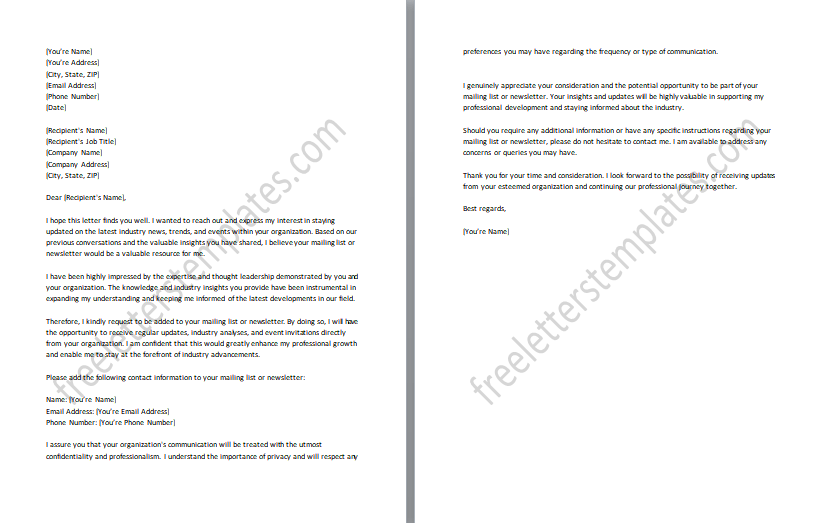
#25: Expressing interest in a job opening or opportunity:
Express your interest in a specific job opening or opportunity within their organization. The purpose of this letter is to provide a summary paragraph for a follow-up letter expressing interest in a specific job opening or opportunity within the recipient’s organization. It serves as a formal expression of interest in the position and showcases enthusiasm for the opportunity to contribute to the team. This letter aims to highlight relevant skills, qualifications, and experiences that make you a strong fit for the role.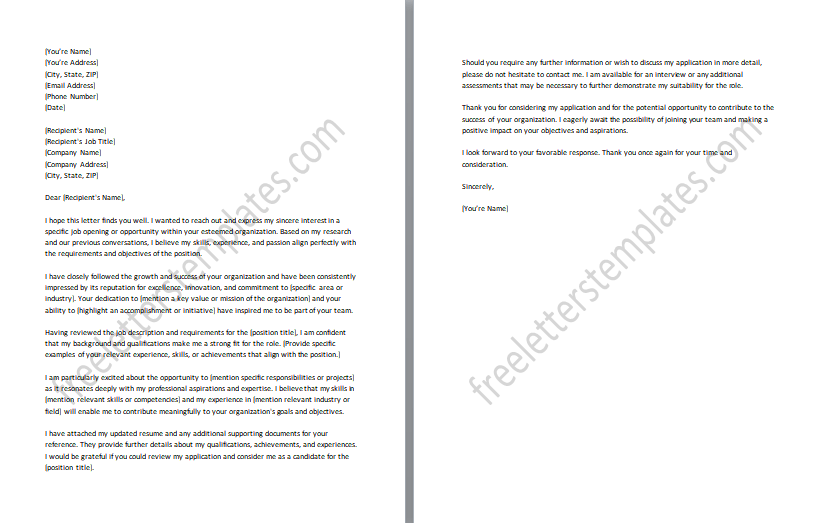
#26: Following up after a networking event/conference:
Send a letter to express gratitude for the networking event or conference and discuss potential collaborations, partnerships, or next steps based on the connections made. The purpose of this letter is to provide a summary paragraph for a follow-up letter after a networking event or conference. It serves as a means to express gratitude for the opportunity to attend the event or conference and connect with valuable professionals. This letter aims to highlight the positive experiences and key takeaways from the event, emphasizing the value gained from the connections made. Additionally, it opens the door to discussing potential collaborations, partnerships, or next steps based on the connections established.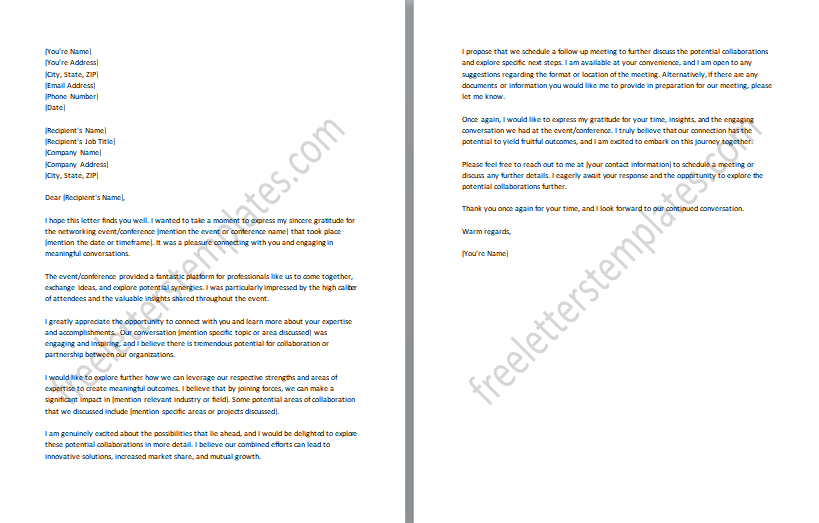
Personalization Techniques
- Referencing Previous Conversations: Start the letter by mentioning specific details or topics discussed during your previous interaction. This shows that you paid attention and value the conversation, making the recipient feel acknowledged and remembered.
- Mentioning Specific Details: Include specific details about the recipient’s work, achievements, or recent projects to demonstrate that you have taken the time to learn about their professional endeavors. It shows genuine interest and investment in their success.
- Highlighting Shared Interests: If you discovered any shared interests or hobbies during your conversation, briefly mention them in the letter. This helps create a common ground and fosters a stronger connection beyond professional interests.
- Expressing Appreciation: Show gratitude for any advice, guidance, or insights the recipient provided during your interaction. Let them know how their input has made a positive impact on your work or decision-making process.
- Tailoring the Call-to-Action: Customize the call-to-action based on your previous conversation. If you discussed specific follow-up actions or next steps, mention them and express your eagerness to proceed. This demonstrates your commitment to building a mutually beneficial relationship.
By incorporating these personalization techniques, you can create follow-up letters that are engaging, thoughtful, and tailored to the recipient. This level of personalization helps you stand out and leaves a lasting impression, increasing the likelihood of continued professional engagement and collaboration.
Language and Tone
When it comes to networking follow-up letters, the language and tone you use can greatly influence the recipient’s perception of you. Striking the right balance between professionalism and friendliness is key to leaving a positive impression. Begin your letter with a courteous and formal greeting, using the recipient’s name and appropriate salutation. Use clear and concise language to express your gratitude or convey your message. Avoid using overly casual or slang terms, as it may undermine the professional nature of your communication. Inject a friendly and warm tone by acknowledging any personal connections or shared interests you have with the recipient. This can help establish rapport and create a more personalized connection. Be mindful of the recipient’s time and keep your letter concise and to the point. Finally, conclude your letter with a polite closing and an invitation for further communication or collaboration. Remember, using appropriate language and tone can go a long way in building meaningful relationships and fostering professional connections.
Conclusions for Networking Follow-up Letters
In conclusion, the key to successful networking follow-up letters lies in personalization and thoughtful communication. By referencing previous conversations, mentioning specific details, highlighting shared interests, expressing appreciation, and tailoring the call-to-action, you can create follow-up letters that make a lasting impression. Remember, the goal is to strengthen connections, foster relationships, and pave the way for future collaborations or opportunities. By implementing these techniques, you can maximize the impact of your follow-up letters and establish yourself as a professional who values meaningful connections.
- Personalization and thoughtful communication are crucial for effective networking follow-up letters.
- Referencing previous conversations shows attentiveness and helps build a stronger connection.
- Mentioning specific details about the recipient’s work or achievements demonstrates genuine interest.
- Highlighting shared interests creates common ground and fosters a deeper connection.
- Expressing appreciation for advice or guidance received during the interaction shows gratitude and sincerity.
- Tailoring the call-to-action based on previous discussions increases the likelihood of a positive response.
- The goal is to strengthen connections, foster relationships, and create opportunities for future collaborations.
- Implementing these techniques can help you stand out and be remembered as a professional who values meaningful connections.
By including a strong conclusion that summarizes the importance of personalization and providing these bullet points, your website visitors will have a clear understanding of the key elements for concluding their networking follow-up letters.